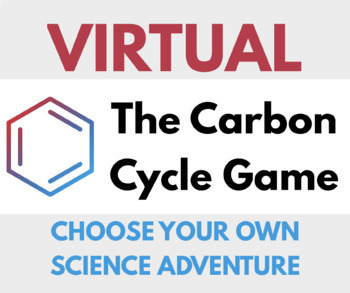The Virtual Carbon Cycle Game
- Google Drive™ folder
- Internet Activities

What educators are saying
Description
Students can use this Google form and virtual dice to play the role of a carbon atom moving through the Carbon Cycle. The probability of appearing in each carbon sink is modeled proportionally to Carbon Cycle in the real world. For example, the ocean is a large carbon sink and there is a high chance that students remain in the ocean for a few rounds in a row.
The number of rounds played is up to the teacher, but throughout the game, students are exposed to concepts such as conservation of matter, formation of fossil fuels, carbon emissions by humans, photosynthesis, and carbon in plants and animals.
This interactive activity is a great introduction to or a review of the Carbon Cycle.
This product includes a a worksheet with a data table and reflection questions.


